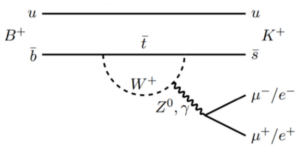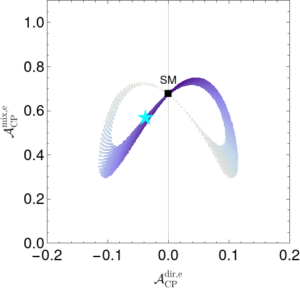Electrons and muons can well be more different from each other than previously believed. That’s according to a new study by theorists at Nikhef, the VU and Maastricht University, published this week in JHEP.
In the article, the researchers discuss so-called lepton universality. According to the Standard Model of particle physics, muons are theoretically identical to electrons, except that they are much heavier. More differences, called non-universality, could indicate still unknown physical processes in the particle world, so-called “new physics.”

Earlier measurements from the LHCb experiment at CERN seemed to show more differences, a sign that something is missing from the standard model. That was measured by B mesons decaying to kaons and electrons or muons. Six months ago, however, LHCb reported after new analyses that no significant difference was measured between electrons and muons after all.
But that does not mean that a difference between the two particles has been ruled out, the work of Nikhef theorists now shows. Far from it, says program leader Robert Fleischer at Nikhef and professor at the VU.
“”The naive conclusion at the time was that new physics violating the universality between electrons and muons was off the table,” Fleischer said. “But our new study now shows that there is still a lot of wiggle room left, even if LHCb sees no significant difference at this point.”
Fleischer and his doctoral students Eleftheria Malami and Anders Rehult and colleague Keri Vos (Nikhef/Maastricht) present in their paper other measurement quantities in which such lepton differences could indeed be seen. These could be found via so-called CP violation: a measurable difference between particles and anti-particles.
Here they do not calculate with a specifically extended version of the Standard Model, for example with additional particles, but with a more general deviation. The results are graphs in which not two points overlap or not, but in which there is a whole region for overlap.

PhD student Anders Rehult: “The interesting thing is that we can show model-independently that there is still a surprising amount of room for differences between leptons. Much more than thought. So when you measure an anomaly there, you know that new physics is at play, even if you don’t yet know exactly what it looks like.”
The new work is part of Rehult’s dissertation, which he hopes to defend at the VU Amsterdam in a year and a half.